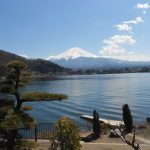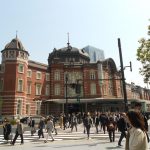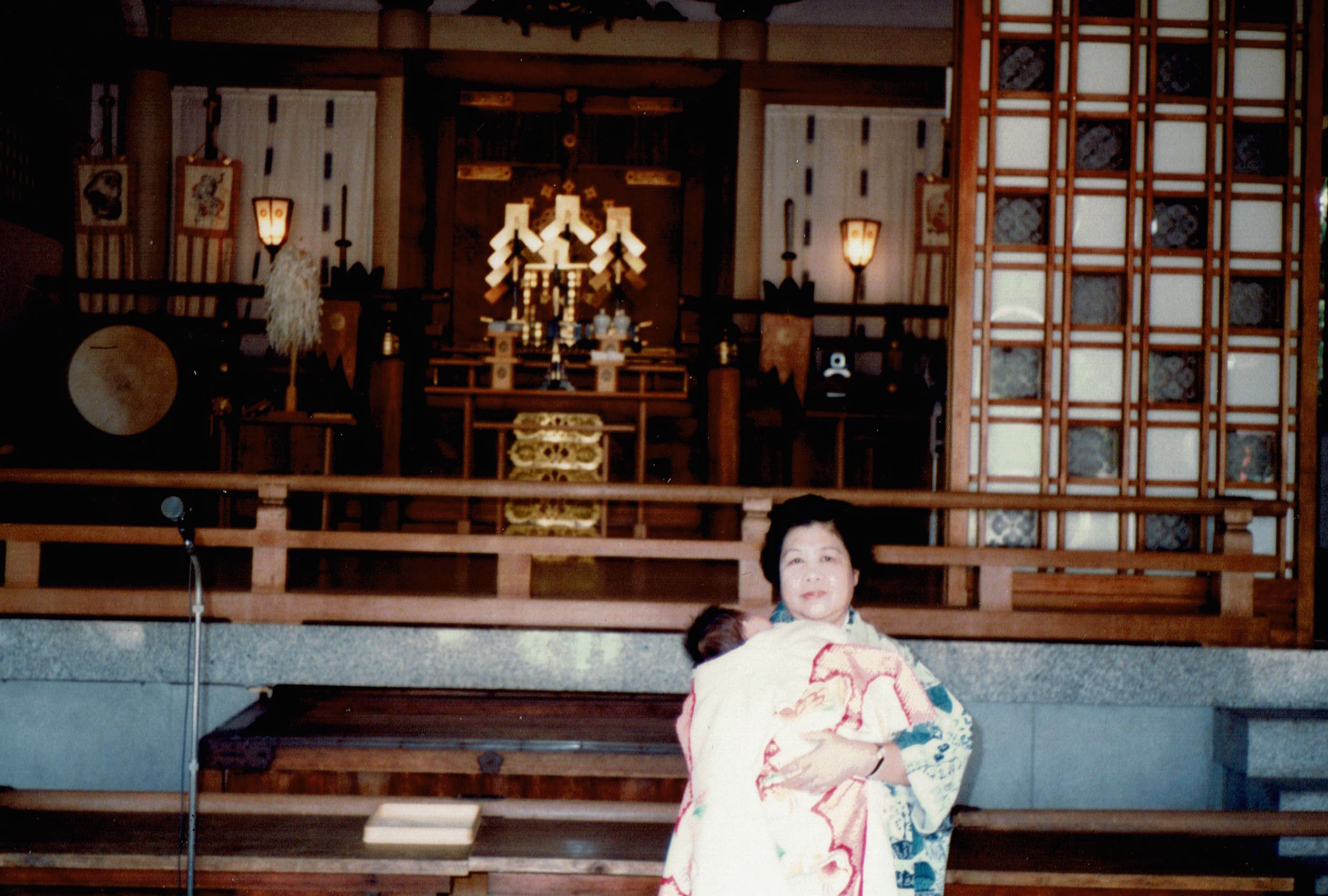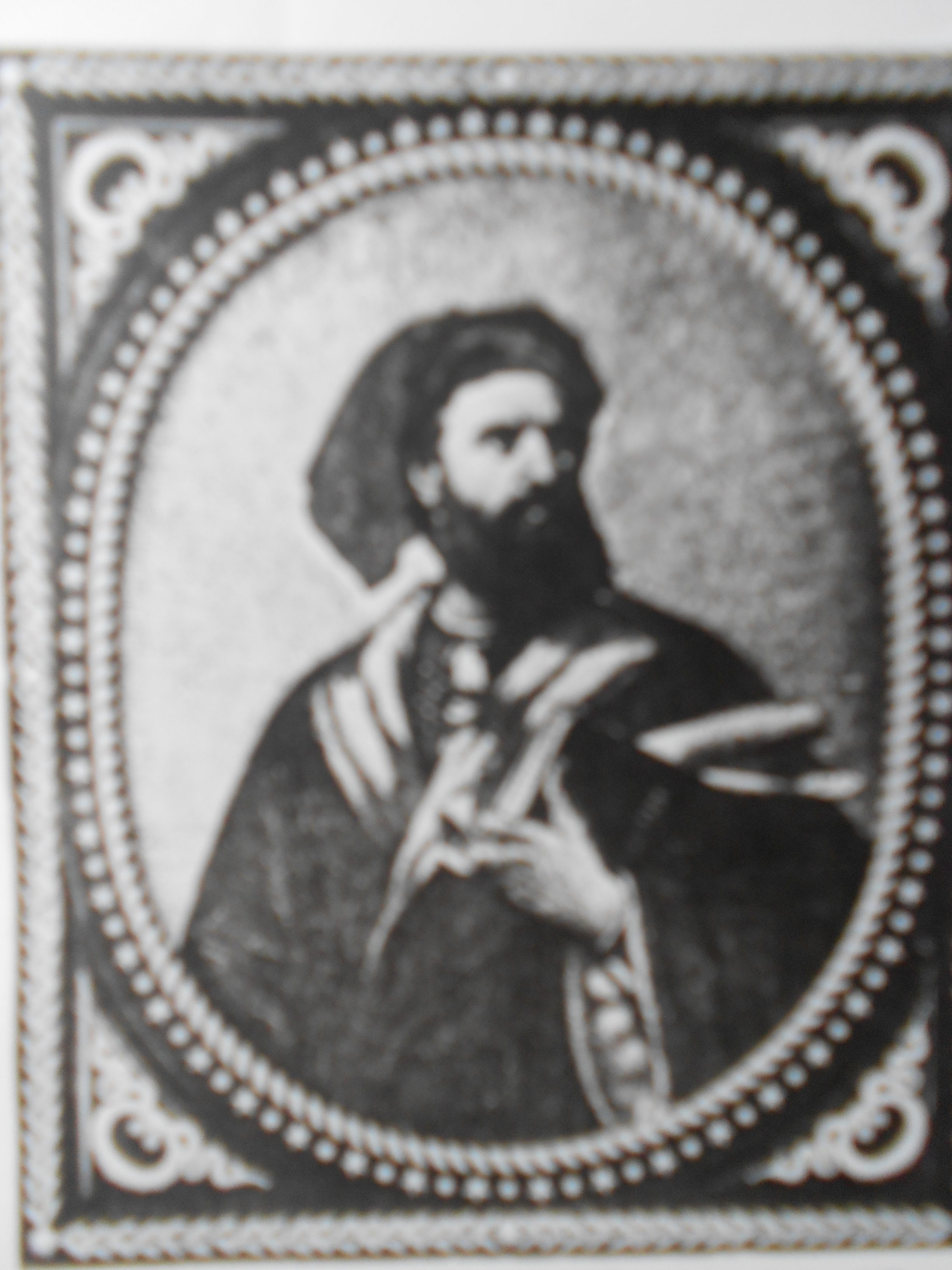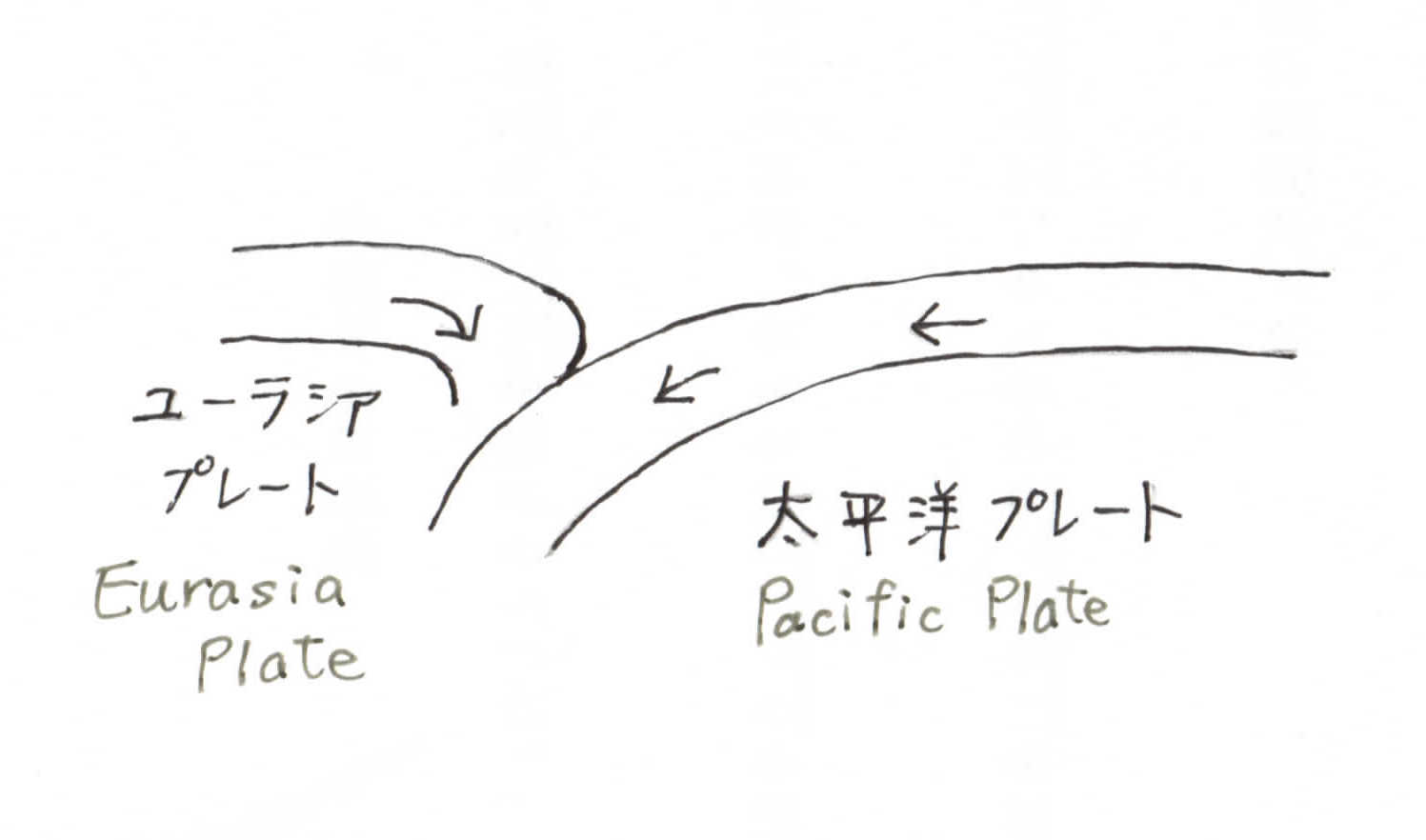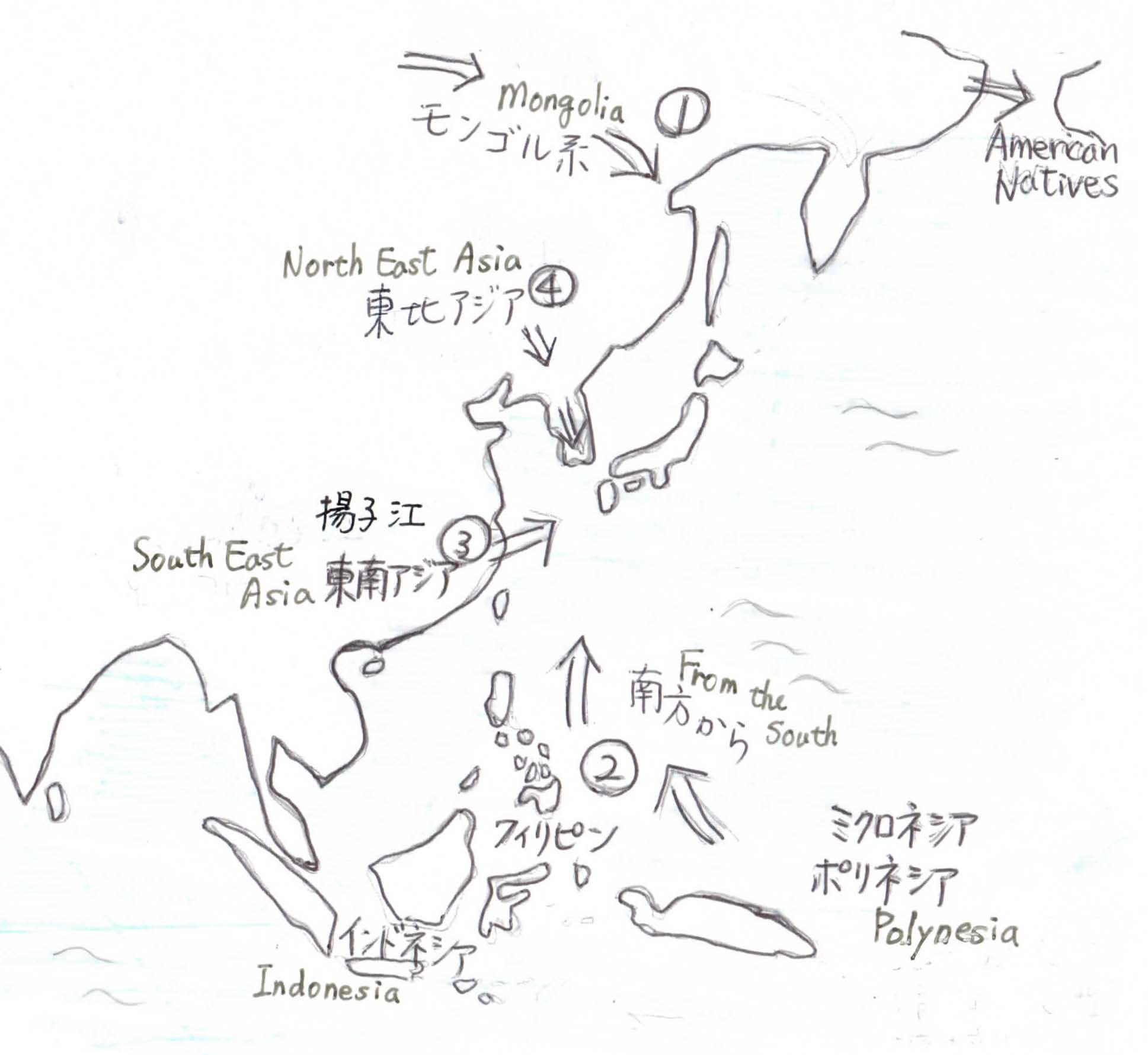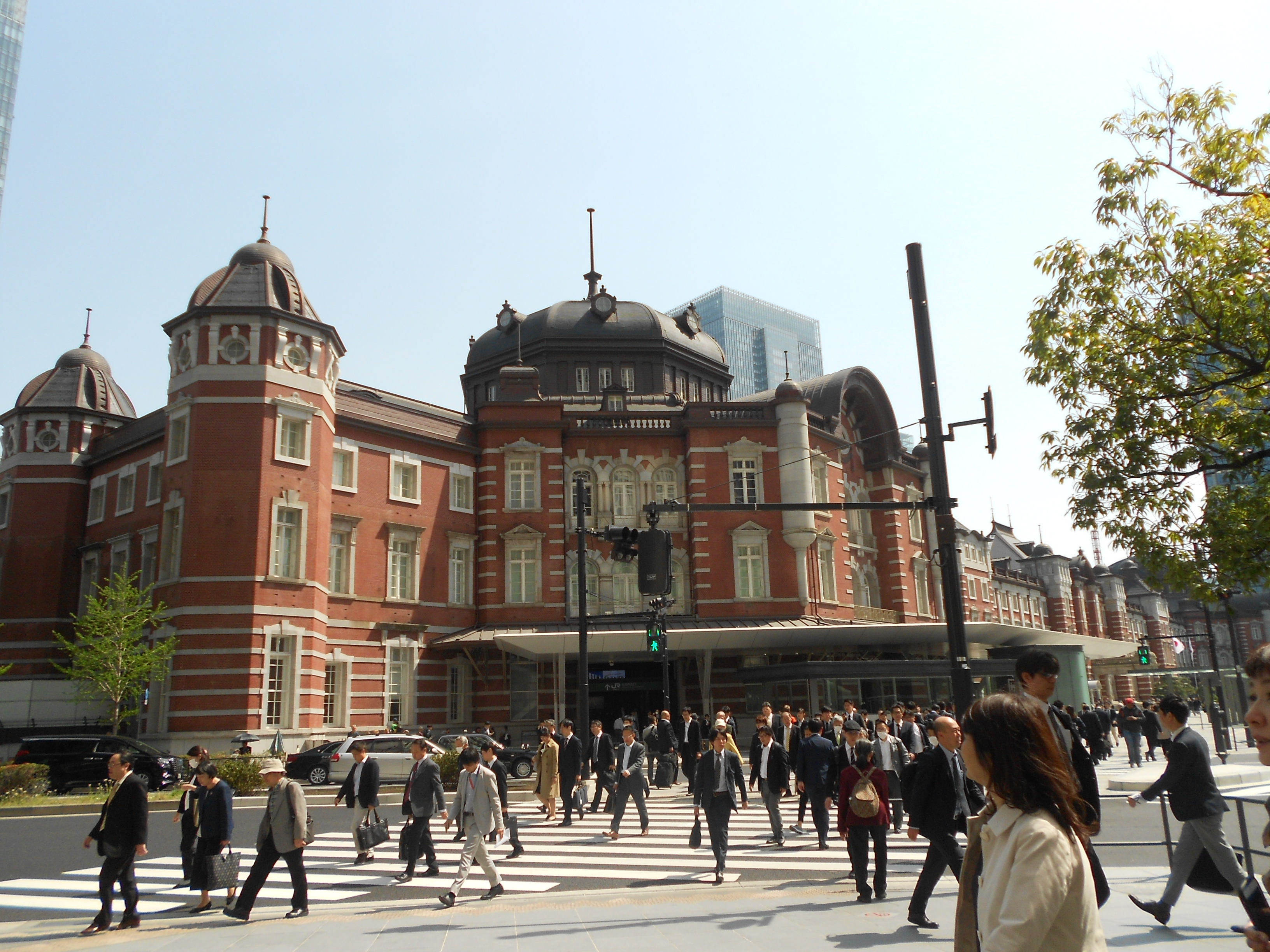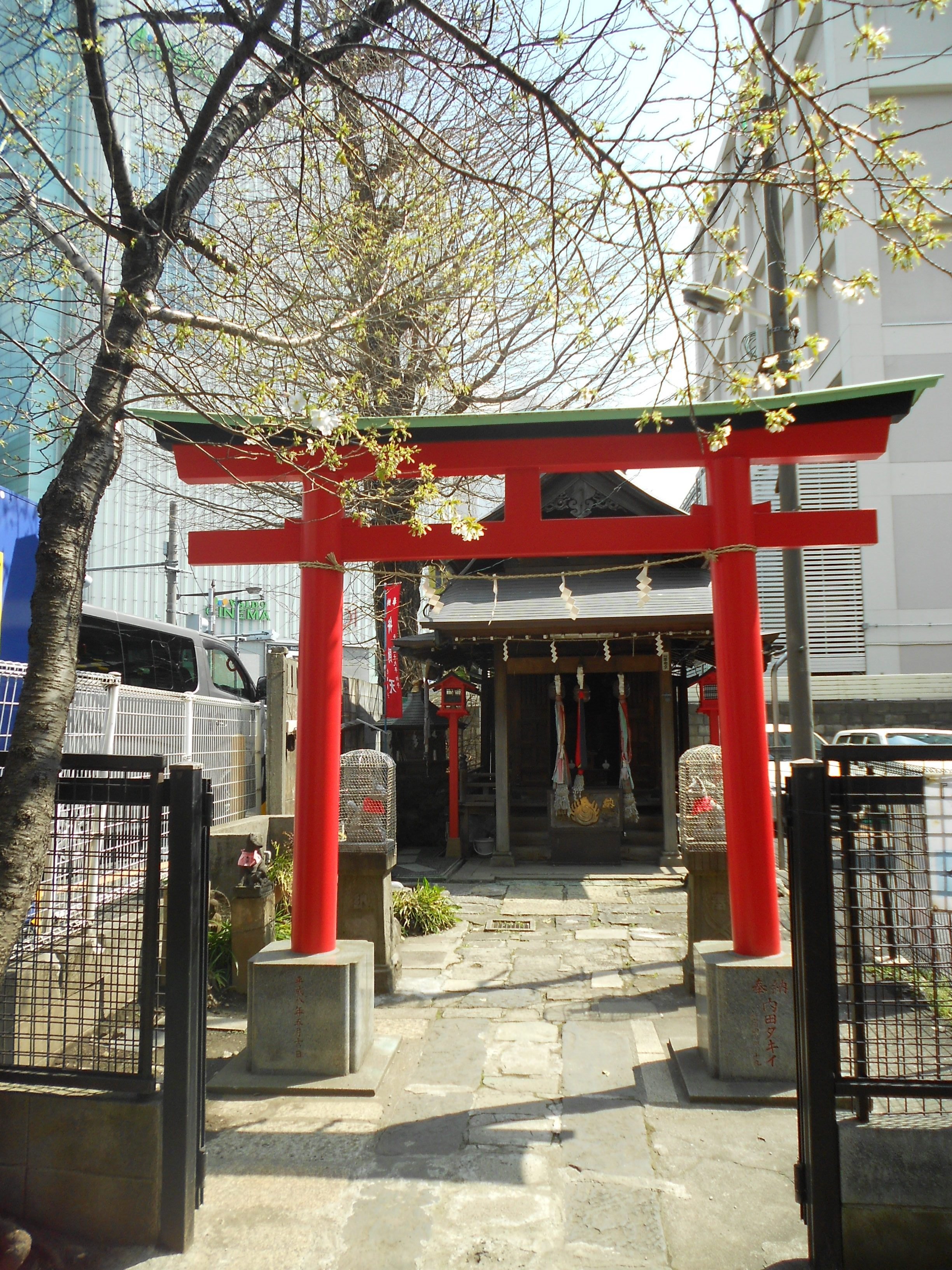“ Chugoku (中国)” literally means “ center(中)” and “ country (国)”.
The western part of Honshu is called “Chugoku region” in Japan.
“China” is also called “Chugoku (中国)” in Japanese.
Since I am from Hiroshima, I am accustomed to hearing “Chugoku Newspaper”, “Chugoku Broadcasting company”, “Chugoku Electric Power”, “Chugoku Mountains”, “Chugoku Highway” etc. But in a Japanese language school, some students are very surprised to see “Chugoku region (中国地方)”. Why is “Chugoku, China” in Japan?
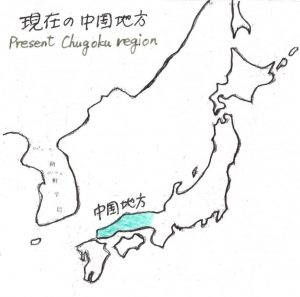
☆1 “Izumo ” before 4th century
When we learn the history of Japan in school, “Yamato no Kuni (country of Yamato) is the beginning of recorded history in Japan in the 4th century AD. It is hard to know the earlier history. But, the people who came from the Asian continent long before “Yamato”, may first be living in Sea of Japan coast closer to the continent. (*1 ) Every time a dispute arose in the continent, some “losers” escaped to the east and over to Japan.
From around the 1st century to the 4th century AD, also inside Japanese islands there were repeated conflicts and fightings. People gradually gathered together into small villages and then small Kuni (countries). The bigger Kuni were “ Izumo” ( Sea of Japan coast, Shimane region), “ Koshi” ( Sea of Japan coast, Hokuriku region), “ Tsukushi” (Northern Kyushu), “ Kibi” (Okayama region), “ Yamato” (Nara region), “ Kinu” (Gumma, Tochigi regions) and so on.
Among them “ Izumo no Kuni” having good ports for Sea of Japan and “iron” and “silver” from the mountains, grew bigger and conquered “Koshi” , boasting quite a wide territory on the Sea of Japan coast.
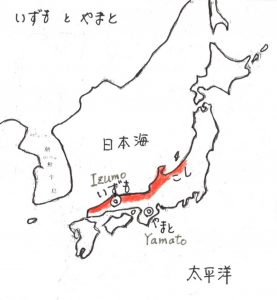
At that time the people of Izumo described their country as :
—— There is a place up in the sky where the deities live, ” Takamagahara”
—— And on the land, here is our country, “Naka tsu kuni” (the center on the land)
“Nakatsukuni ” in the Original Japanese becomes “Chugoku (中国)” when written in kanji.
☆2 “ Izumo ” and “ Yamato ” (8~ 19 century )
But the new country, “Yamato”, grew stronger and challenged the big, older “Izumo”. And finally “Yamato” won and “Izumo” lost. Other countries also gradually went under “Yamato”. The fight between “Tsukusi (Northern Kyushu )” and “Yamato” at the beginning of the 6th century AD left a written record.
Tsukushi was defeated, and this battle was the last big fight against Yamato. The older fight between “Izumo” and “Yamato” maybe in the 3rd century AD remained only in the world of “myth” because “History” is written by the winning side, that is ₋ by Yamato.
Finally “Yamato” (Nara) united Japan, and the leader of Yamato, with the name of “Tenno (Emperor)”, has continued for more than 1600 years until now.
After Nara, Heian period ( 8C ), “Chugoku region of Izumo” was ‟officially” changed by two different names, “Sanindo (山陰道, the shadow side of the mountain, Sea of Japan side)” and “Sanyodo (山陽道, the sunny side of the mounain, the Seto Inland Sea side)” because the people of Yamato didn’t want to use the word “Chugoku” (the center of the country) for “Izumo”. “Sanindo” and “Sanyodo” were the official names from 8th century to 19th century.
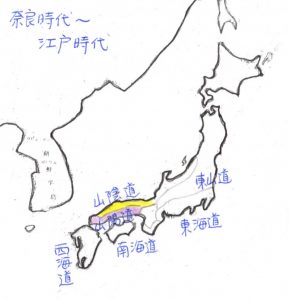
But it seems that the name of “Chugoku region” was used by local people for a long time. Especially “Chugoku Mountains” was used because it lies in both Sanindo and Sanyodo. There was no other good name for the mountains.
☆3 “Izumo Taisha (shrine) ”
“ History” is the history of winners. The loser may have a regretful feeling secretly for over 1600 years. Even now in the country of “Izumo” there is a special pride and “Izumo Taisha (shrine)” is the symbol of this pride.
Every October all of “the deities of Yao Yorozu (thousands of deities)” nationwide gathered at “Izumo Taisha”, so October of the lunar calendar was called “Kamiarizuki (the month of many deities) in Izumo, and it is “Kannazuki ( the month of no deities)” in other countries. ( I can imagine many representatives from other countries gathered at Izumo Taisha every October. )
Almost all shrines have their manner of worship: “bow twice, clap hands twice, and bow once”. But Izumo Taisha keeps its own way: “bow twice, clap hands four times, and bow once”. There may be some “hidden mystery”.
☆4 “Chugoku region ” again (19th century)
“Yamato” probably tried to erase the name “Chugoku” because it meant “Izumo” was “the center of the country”. But the name of the “Chugoku region” was officially adopted again in Meiji era in the 19th century and is still in use today.
Why?
I heard some people didn’t like the name of “Sanindo (山陰道 shadow side of the Mountain)”.
Who was the ruler of Meiji era?
Many ruling people in Meiji government, for example, the first prime minister, Ito Hirobumi, was from Hagi city in Sanin region of old country of Izumo .
☆5 Present “Chugoku region ”
In recent years the public transportation systems have developed more along the Pacific coast and Seto Inland Sea coast and there are many large cities, because the climate on the Pacific coast is warmer and better than on Sea of Japan coast with a lot of snow in winter.
As a result, the center of the Chugoku region now seems like Hiroshima city on Seto Inland Sea coast and the head office of the Chugoku newspaper and Chugoku broadcasting company are in Hiroshima. But “Chugoku” was originally “Izumo”, Shimane prefecture, on Sea of Japan coast.
In a word
Long, long time ago, about 2000 years ago, the country of “Izumo” called itself “the place where we live was the center on the land”, so it was called “Chugoku area”.
――― (*) ―--
*1 Refer to “ 8. Where did the Japanese people come from?”

